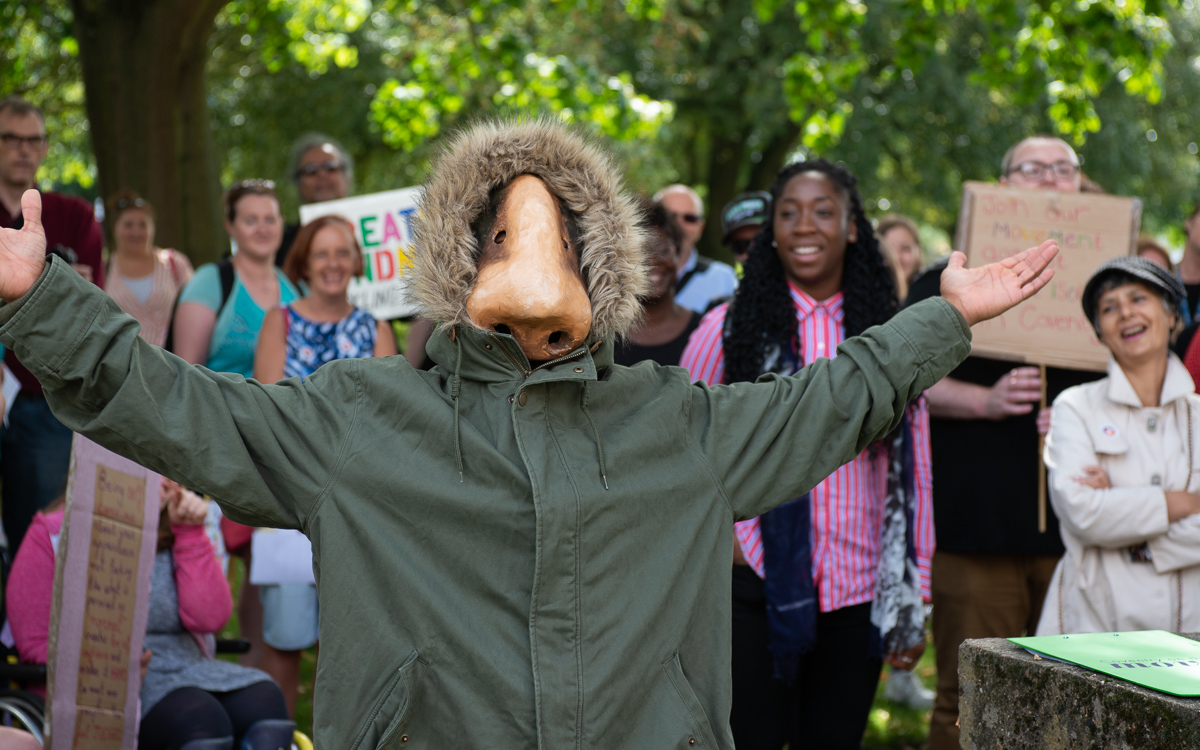Stories
I heard it on the Grapevine
A lesson on how to create delight through listening.
Stephanie Wong | 6 Apr 2021

A Nosey Parker. Image credit: John Whitmore.
Our fruits are only as strong as our roots
In traditional organising methodology to build relationships we start with 1-to-1 conversations and then move into larger numbers of people through “listening campaigns” to get to the heart of people’s challenges and ideas. Traditional listening campaigns organise around house meetings, where around 12 people or so come together to speak more deeply on an issue. This is then “rinsed and repeated” until we feel we have listened to enough people in a given constituency. In other organising spaces you may find door knocking as another method to listen and engage with more people. Both are effective.
I have also seen when these traditional methods are pushed on organisations and communities who are wanting to engage in organising methodologies, but know these ways of doing are outside of their culture. I have seen an attitude of “we know best” from organisers who fail to listen to the lived experience of those they work alongside.
Grapevine’s listening campaigns pull apart “tradition” in surprising and playful ways. To ensure we are listening to people “not already with us”, the CfG movement interrupts a public space with sofas on wheels in bright coloured felts, there are empty placards and silent megaphones waiting for you to fill them with your words. You will be stopped in your tracks by kerbside pop up gardens which will appear as if from nowhere or be moved to take part in theatrical walks and talks wind their way across the city. The intention is to create memorable moments and experiences that disrupt the norm and encourage curiosity and conversation. These moments, in the words of Priya Parker, “have the potential to alter many other moments to come”.
Never go outside the experience of your people.
This is a rule I return to in organising. What Alinsky means is not the potentially boring or rigid. Quite the opposite. That we as people are the most creative if given a chance to participate and shape the work meaningfully. The delightful and imaginative ways of listening comes from the movement. It is from their lived experience, their understanding of how to bring community together, that the listening is so effective. It supports us to listen to those who rarely get listened to, and to hear the unexpected, difficult and challenging stories of the city. People in the movement are the best source of innovation, accessibility and fun. Each organising moment allows people to “choose their own adventure” in how we listen and engage.
Like breaking up civic spaces with Social Living Rooms and written provocations eg. What makes us isolated? Creating an experience that is the polar opposite of ‘consultation’. During a midweek lunchtime you might see spilling out from a cafe bar in a busy city centre, a mini ‘’park’’ ie a lot of artificial grass, two local musicians, posters and placards inviting you to share your experiences. It is fun and games and it is also inviting tension. We ask people questions that invite conversations about the hard, the heartbreaking and the unjust. We also ask them – so what is your role to play in making things better? As a result people in Coventry are showing up to events in significant numbers, the rooms always have people we have not met before, from all parts and roles of the city.
We drummed up curiosity in our first mass online listening event by having Foka Wolf (Brum’s answer to Banksy) create our posters which toured around the city centre dressed as Wonder Woman, a Tiger, a Nosey Parka and an undercover reporter. It worked and what’s more a photographer spotted us and took professional pics for us to share.
If we follow a rigid structure of “this is how it has always been done” we will always find reasons of why some people can’t participate, why work can not change. We will point blame at not enough resources, not enough time or not enough understanding. What if we approached listening with the approach of ” we have all we need, we can take our time and we are here to learn and listen.” Where one person may see a lack of something, Grapevine sees gifts and potential. As a result the movement disrupts the norm and in the words of Alinsky: agitate (and) break through the accepted pattern.
So if we want a movement that moves with more people we need to be playful, loosen up some of the ways of working and invite tension into the mix, so that we can bring in new people to contribute and disrupt the norm.
Task
Reflection Questions
- Who should you be listening to who you are not listening to currently?
- Are there any assumptions at play that make you feel like some folks don’t want to engage with you? Have you tested those assumptions?
- How could your listening be more intentional in order to create sustainable relationships and connections?
- How are you inviting in moments of tension in your listening?
- How are you listening for the opportunities in the difficult interactions?
- How are you seeing the potential in the moments that don’t go according to plan?
This is the third in a series of posts about our work with Grapevine: